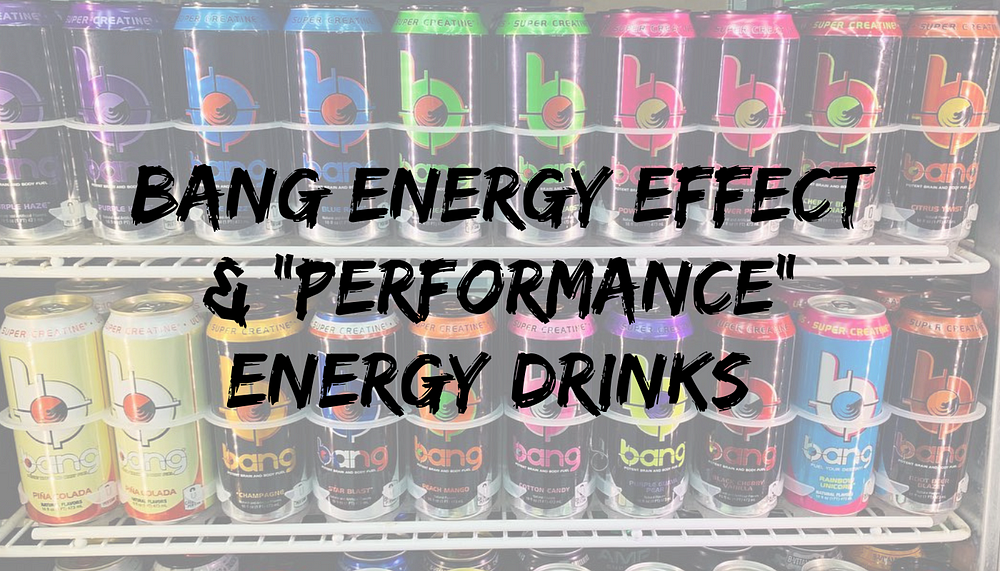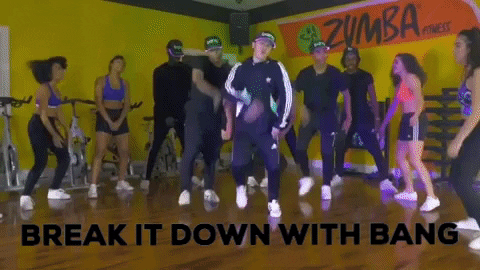The Bang Energy Effect

Lately, it seems there has been a growing amount of buzz surrounding the energy drinks category of the beverage industry. Just to get this known bias out of the way, I have been a consumer and fan of energy drinks since my undergrad and graduate college period from 2003 to 2009. During those years, Red Bull and Monster Energy were semi-regularly consumed for boosts of energy during long study sessions or to party harder. This timeline of discovery and dual functional usage is not unlike many other Older Millennials, which are driving the energy drink growth.
For whatever reason, energy drinks seem to polarize consumers. Despite that consumer sentiment headwind, the category has continued to grow in the high single digits CAGR for the last decade. In total, the U.S. energy drinks market is now around a $12 billion industry.
For those that might not be too familiar with the U.S. energy drink market, the three biggest brands have been the same since 2007…
- Red Bull
- Monster Energy
- Rockstar Energy
When I talk about energy drinks, I currently put them in the following sub-categories…
- Original Sugar Version (*Note — I also include juice versions)
- Sugar Free
- All-Natural
- Performance
This may surprise most of my followers, but the “original sugar version” is still the king of the energy drinks market, with the top two sellers (accounting for about 40% of market). Yes, the sugar free is growing faster, but it’s also more competitive, as brands launch numerous flavor innovations and iterations into the market.
If you are interested in hearing more about the “whole” energy market, including powdered energy sticks and shots, please consider watching my YouTube below…
Performance Energy Movement
The performance sub-category is where the action is getting very interesting right now! This is the fastest growing sub-category in the energy drinks market. Before I go too far, I think it might be best to give my readers the definition of a performance energy drink. That is because for most of my readers that have backgrounds in health and fitness, considering an energy drink as “performance” might not make sense from a viewpoint of working out. Fact is, most performance energy drinks are not marketed as pre-workout drinks, though some consumers naturally have started to use them that way. The performance term comes from the addition of nutraceutical ingredients, higher caffeine contents, and also a bit of branding positioning.
So, what is driving this performance energy drink craze?
Firstly, I think its an iteration from sugar free energy drinks that are aligned with the “better for you” CPG product trends. Secondly, with the U.S. being a Nation of over-caffeinated inhabitants, the added 50–100% more caffeine is a desirable product proposition. Finally, I believe as the energy drink market matured over the last two decades, it provides usage fragments that were outside of party goers and younger individuals looking for an energy boost in college.
Bang Energy Effect
“If you ain’t Bangin’, you ain’t hangin” — Jack Owoc (Founder and CEO of Bang Energy)
Welcome to the Bang Energy effect. VPX Sports (owner of Bang Energy) has defined the new performance sub-category of energy drinks. If you read that quote from Jack Owoc and thought it was risky, you likely are included in the consumer sets that Bang Energy is not targeting anyways.

Problem is, those individuals that aren’t targeted, are the ones that are now finally paying attention to the fastest growing energy drink brand. Though the brand has had supersonic growth for the last 3–4 years, it wasn’t until Bonnie Herzog, a powerful beverage analyst from Wells Fargo Securities, wrote a piece that highlighted Bang Energy’s effect on the industry, that non-beverage CPG professionals starting to realize what was happening.
So, how big is Bang Energy right now?
According to a 52-week sales data from IRI’s March 2019 report, it showed Bang Energy at $440M. While that is impressive and puts them almost half of the way to Rockstar Energy’s revenue, a more recent 4-week Nielsen sales data report showed Bang Energy still growing substantially, with about $80M in sales. At that annual run rate, it would put the brand at closer to a $1B annual run rate and overtaking Rockstar Energy for the first shakeup of the “top 3” U.S. energy drinks in more than a decade.
Why is this happening?
To be honest, this has been a popular question that I have gotten dozens of times from clients and countless of other times from people in my professional network since late 2016.
My answer has always been the same and echoes some of the comments I made about the performance sub-category of energy drinks as a whole…
- There has been a demand increase from consumers of food and beverage items toward fitness and better-for-you products
- Bang Energy has done a great job at creating active loyalists through a strong marketing strategy that makes customers feel cool to drink a Bang (essentially this created consumer pull)
- Bang Energy has been aggressive in their sales, price and promotion strategy (essentially this created retail push)
- Bang Energy is a unique (and tasty) product that stood out compared to the competition, especially if you consider the energy drinks market five years ago
With 700–900% growth over the last few years, Bang Energy has helped the performance sub-category grow to support other emerging brands and now fragment into an interesting future that mimics other CPG categories.
Emerging Brands
- Celsius Beverage — it could be argued that Celsius was the original performance energy drink when it launched in 2005. In 2018, the company had $52.6M in revenue, which was up 45% YoY. They have seen continued strong growth in the first part of 2019 with placements in various major grocers, mass retailers, and convenience stores.
- Nutrabolt — while this year-old energy beverage extension is not marketed as a pre-workout, it’s namesake Cellucor C4 is indeed the pre-workout energy market leader. With over $500M in C4 product family SKUs sold in 2018, it is no surprise that the company recently landed in Walmart nationwide and has reported that March 2019 sales showed $2.4M in revenue.
Major Brand Extensions
Because the “top 3” energy drinks haven’t changed in over a decade, the need to make defensive product development moves has been non-existent. That all changed in late 2018…
- Rockstar Energy — launched Xdurance in late 2018
- Monster Energy — launched Reign in early 2019
- Keurig Dr. Pepper — partnered on Adrenaline Shoc in mid-2019
- 7-Eleven — launched private label Quake in mid-2019
Fragmented Smaller Brands
- Alani Nu — is a year-old women’s supplement line owned by mega-fitness influencer Katy Hearn. They only sell direct-to-consumer and nationwide through GNC. While only being a GNC vendor for about three months, their performance has been so strong that they received the CEO’s praise on a recent GNC quarterly investor conference call and was named breakout brand of the year at the 2019 GNC franchise conference.
- G Fuel — is an esports and gamer-focused supplement line that is launching a 16oz RTD beverage version of their massively successful powdered gaming energy and focus product. Though the sales of G Fuel powdered version is not at the same level as C4 noted above, they strongly control the hyper-growth gaming energy market.
- LIFEAID Beverage Co.— is a multi-year INC500 growth beverage company that offers a variety of functional performance beverages that was originally positioned in the CrossFit market (still markets very strong in this area). The brand’s product offerings are not a close comparison to the high caffeine energy drinks mentioned in this article, but I believe the performance athletic and wellness approach is a fragment that will continue to grow.
Final Thoughts
Like all CPG categories, performance energy drinks are now seeing fragmentation and fragments of fragments happening at a crazy fast pace. As personalized hits closer to 1-to-1 with consumers, they will continue to look for products that are more in line with their individual needs.
As for Bang Energy, this train isn’t stopping anytime soon, as they haven’t even grown to full distribution nationally and land national placement in many major accounts. In my opinion, what stops Bang Energy now is Bang Energy. If they can continue to execute at a high-level and sidestep risks, they could be on-track to compete for the number two spot with Monster Energy by 2022.
